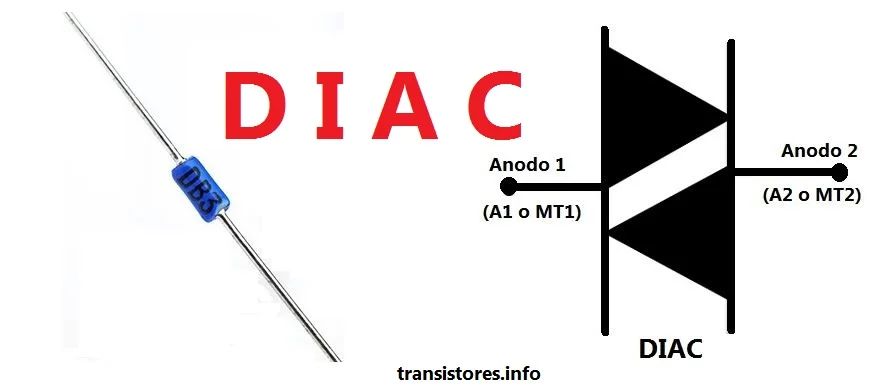What is a DIAC?
DIAC is a bidirectional trigger diode, meaning it can conduct current in both directions. It’s like a switch that remains off until a certain voltage point is reached, then suddenly turns on. Unlike SCRs or some other semiconductors. they are designed specifically for triggering purposes. They act as a switch that fires once the voltage exceeds their breakdown level. This simple behavior makes them perfect for controlling AC power flow.
Working:

When the voltage hits its breakdown, it switches from non-conductive to conductive instantly. Think of it as a catalyst that triggers a larger device, like a TRIAC. Once triggered, it allows current to flow in both directions, conducting until the voltage drops below a certain level. This rapid switch-on helps control power in AC circuits with precision.
Construction and Types
Most DIACs are made from silicon, which provides stability and durability. The core component is a small piece of silicon that’s formed into a specific geometry. Variations include the “standard” DIAC, designed for typical power control, and specialized types for higher voltages or faster switching speeds. The choice depends on your circuit’s needs and the environment where they will operate.
Triggering Process
Imagine slowly increasing voltage in a circuit. When the voltage reaches the its breakdown point, it suddenly turns on. This rapid change allows a larger device, like a TRIAC, to trigger. This essentially acts like a gate that opens only when enough voltage is applied. Once activated, it conducts current in both directions, controlling the power delivered to the load. This process helps achieve smooth, phase-controlled switching.
Voltage and Current Ratings
Most DIACs break down at voltages between 30V and 70V, but some can handle higher voltages. The maximum current rating usually ranges from a few tens to hundreds of milliamps. It’s important to choose it with ratings that match your circuit’s voltage and current needs. Exceeding these ratings can damage the device or cause circuit failure.
Advantages of Using
Using DIACs offers several benefits. They switch on very quickly, ensuring minimal delay in circuits. Their bidirectional nature means they work equally well in AC applications without extra components. Plus, they simplify circuit designs — reducing parts and complexity while improving reliability.
4 Common Applications
1. Light Dimmers and Phase-Control Circuits
Ever adjusted the brightness of a lamp? That’s often done with a phase control circuit using a DIAC. It triggers a TRIAC at different points of the AC cycle, gradually increasing or decreasing power. This process creates smooth dimming effects, making lighting look more natural and energy-efficient.
2. Solid-State Relays
In solid-state relays, DIACs act as trigger devices. They control the activation of TRIACs, switching power on and off without moving parts. This setup helps create fast, reliable switching in control systems with low-voltage signals.
3. Triggering TRIACs
The main job of a DIAC is to trigger a TRIAC in AC power systems. When the DIAC conducts, it sends a brief pulse to fire the TRIAC. This method is widely used in motor speed controls, heater regulators, and other high-power switches.
4. Other Uses
DIACs also find roles in circuits that need voltage stabilization, surge protection, and safety devices. For example, they can help prevent voltage spikes from damaging sensitive equipment or trigger alarms when voltage levels go beyond safe limits.
Testing and Troubleshooting
Testing a DIAC is straightforward. Use a multi meter to check resistance; a good DIAC will show high resistance when off and low resistance when triggered. You can also apply a test voltage to see if it conducts at the expected breakdown voltage.
Common Testing Procedures
- Set multi meter to diode mode. Check resistance across the terminals.
- Apply a low voltage source and increase gently. Note the voltage at which it turns on.
- If it doesn’t conduct at the right voltage or stays open, it’s probably faulty.
Troubleshooting Tips
- Signs of failure include constant conduction or open circuits.
- Replace damaged DIACs immediately to avoid circuit failures.
- Ensure all connections are tight and proper to prevent false triggering or damage.
Summary
DIACs are small but mighty components that bring stability and control to AC circuits. They act as reliable triggers for TRIACs, making your power switches smoother and more efficient. Picking the right DIAC and testing it properly ensures your circuits stay safe and long-lasting. As technology advances, DIACs are set to become even smarter, powering the future of electronics with simplicity and reliability. Dive deeper into their applications, and you’ll discover countless ways they can make your projects better.





